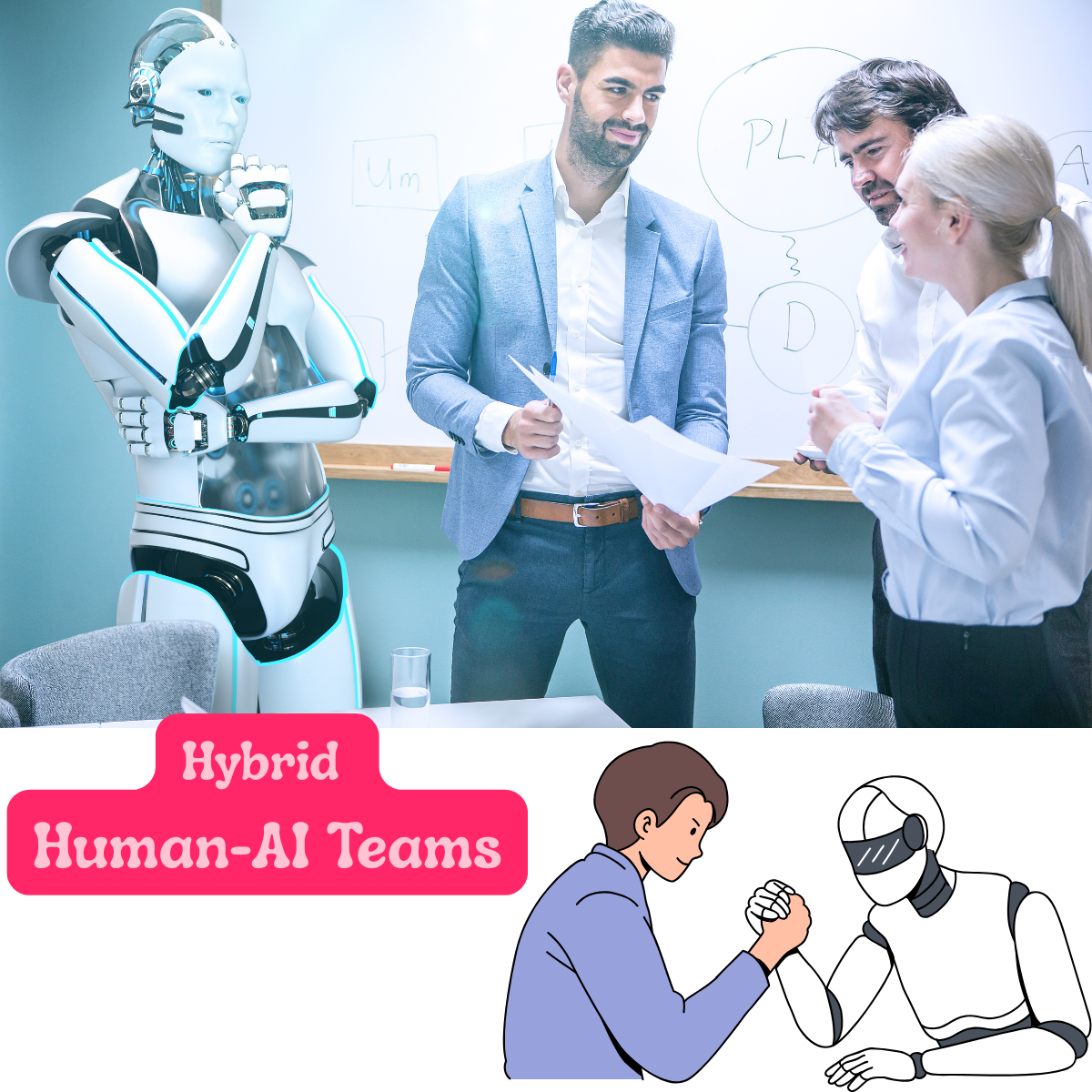Posted At: Aug 14, 2025 - 343 Views

Hybrid Human-AI Teams: The Future of Collaborative Intelligence
In today’s fast-evolving technological landscape, a new and powerful paradigm is emerging — Hybrid Human-AI Teams. This model brings together the complementary strengths of humans and artificial intelligence (AI) to tackle increasingly complex challenges across industries. Rather than viewing AI as a replacement for human work, hybrid teams position AI as an amplifier of human intelligence, creativity, and decision-making capabilities.
In this blog, we’ll dive deep into what Hybrid Human-AI Teams are, why they matter, how they work, and examples of their real-world impact.
What Are Hybrid Human-AI Teams?
A Hybrid Human-AI Team refers to a structured collaboration where humans and AI systems work side-by-side toward shared goals. In these teams, AI agents are not merely tools, but active participants that analyze data, generate insights, suggest actions, and sometimes even execute tasks autonomously — all while humans provide strategic direction, critical thinking, ethical oversight, and emotional intelligence.
Key characteristics include:
- Collaborative workflows: Humans and AI contribute in ways that play to their respective strengths.
- Continuous learning: AI models learn from human feedback; humans adapt based on AI insights.
- Dynamic decision-making: Both human intuition and machine precision inform decisions.
Why Hybrid Teams Matter
There are three major reasons why hybrid human-AI teams are rapidly becoming essential:
- Scalability and Speed
AI can process massive volumes of information at speeds no human can match, enabling faster data-driven decisions.
- Enhanced Accuracy and Objectivity
Machines can help eliminate human biases and errors, ensuring more consistent and precise outcomes — especially in repetitive or analytical tasks.
- Preserving Human-Centric Qualities
Tasks involving empathy, creativity, ethical judgment, and nuanced communication are still areas where humans outperform AI. Hybrid teams ensure that these crucial elements are not lost.
Ultimately, hybrid teams allow organizations to harness both the computational power of AI and the irreplaceable nuances of human intellect.
How Hybrid Human-AI Teams Work: A Framework
Creating an effective hybrid team isn’t just about plugging AI into existing workflows. It requires deliberate structuring. Here's a basic framework:
1. Task Allocation
- Humans focus on open-ended, creative, ethical, or interpersonal tasks.
- AI handles data-heavy, pattern-recognition, automation, and predictive analysis tasks.
2. Interaction Model
- Shared dashboards and natural language interfaces allow seamless communication between humans and AI.
- Feedback loops ensure that AI models are continuously learning from human corrections and suggestions.
3. Oversight and Trust
- Regular review cycles ensure AI outputs are audited.
- Transparency in AI reasoning builds human trust (e.g., explainable AI methods).
4. Skill Development
- Human team members receive training to work effectively with AI systems, including understanding AI limitations and ethical considerations.
Real-World Applications
1. Healthcare
Doctors are using AI to analyze scans and medical records for faster diagnosis, while retaining human judgment for treatment decisions and patient communication. For example, radiologists use AI-powered imaging tools but make the final call on diagnoses.
2. Finance
In banking and investment, AI algorithms handle fraud detection, risk analysis, and portfolio optimization. Human advisors then use these insights to craft personalized strategies for clients.
3. Customer Service
AI chatbots handle routine inquiries, escalate complex issues to human agents, and provide real-time support — resulting in faster service without sacrificing empathy.
4. Manufacturing
AI-powered robots and predictive maintenance systems increase factory efficiency. Human supervisors oversee these systems, manage exceptions, and focus on innovation.
5. Creative Industries
Writers, artists, and filmmakers use AI to generate ideas, refine content, and edit drafts — speeding up the creative process while preserving artistic vision.
Challenges to Address
While promising, hybrid human-AI collaboration comes with challenges:
- Bias and fairness: AI systems can unintentionally reinforce societal biases if not carefully trained and monitored.
- Ethical concerns: Decisions made with AI assistance must still uphold human values and ethical standards.
- Skill gaps: Workers need upskilling to collaborate effectively with AI.
- Over-reliance risk: Blind trust in AI outputs without human verification can lead to mistakes.
Proactively addressing these issues is crucial for building successful hybrid teams.
The Future of Hybrid Human-AI Collaboration
Looking ahead, the nature of work will continue to shift toward partnership models where AI and humans complement each other’s strengths. Organizations that embrace hybrid teams today will gain a competitive advantage — not just by increasing efficiency, but by enhancing human creativity, decision-making, and problem-solving at scale.
The mantra for the future is clear: Not Human vs AI, but Human + AI.
If properly orchestrated, hybrid human-AI teams will redefine industries, create new roles, and unlock unprecedented levels of innovation. The future is collaborative — and it’s already here.
Hybrid Human-AI Teams represent more than just an operational model; they embody a new philosophy of work — one rooted in mutual empowerment and shared growth between humans and machines.
Success in this new era will belong to those who master the art of collaboration — not just between people, but between intelligences.
